
Plant of the Month January 2024
GENERAL INFORMATION:
Mahonias were not on my garden lists when I was young. “Oregon grape” was a poor substitute for holly in England. Our neighbour here in Canada had a bed filled with Mahonia aquifolium beside her front door, facing north and east. It was dull dark green all year with a bronzy tone in winter and a few yellow flowers in early spring. Garbage blew in and was difficult to remove. Our present neighbours axed it. However, I remember Thelma as it gave us a very attractive seedling in our front bed.
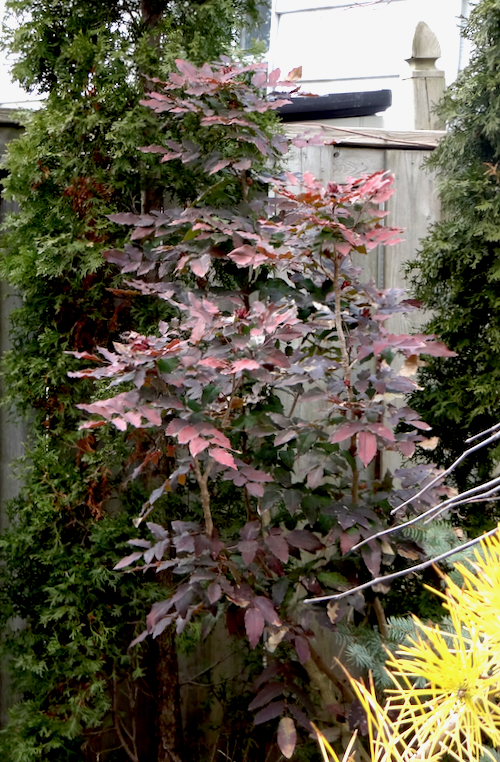
Mahonia x wagneri ‘Pinnacle'. Early March.
Mahonia x wagneri ‘Pinnacle' is a splendid hybrid between Mahonia aquifolium and Mahonia pinnata.
Synonym: Berberis aquifolium ‘Fascicularis', Mahonia pinnata 'Pinnacle' and Mahonia aquifolium ‘Fascicularis’.
Common Name: Oregon Grape ‘Pinnacle’, Oregon Holly Grape.
Other Cultivars: Mahonia aquifolium ‘Apollo’ is similar. Mahonia aquifolium ’Smaragd’ is shorter.
Life Cycle: Upright, evergreen shrub which may produce suckers.
Height: 1.5 m, slow growing.
Bloom Time: Late April, early May in Toronto.
Mahonia x wagneri ‘Pinnacle' - Flowers - Early May.
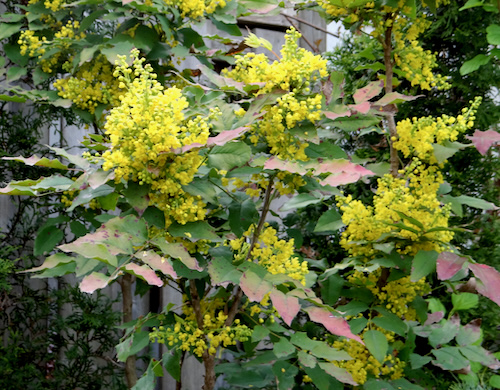
Flower Colour & Size: Tiny yellow flowers in dense racemes at branch tips before the new leaves appear. The flowers are up to 1 cm long and look like tiny daffodils.
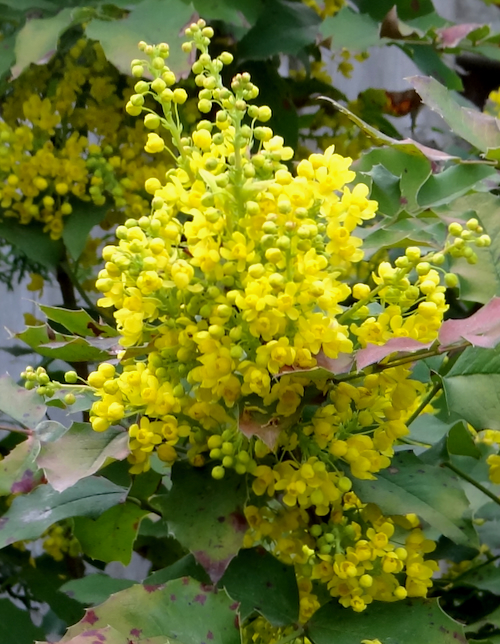
Mahonia x wagneri ‘Pinnacle' - close up.
Leaves: Compound leaves with 5-11 leaflets pinnately arranged, holly like. They are thick, shiny, dark to mid green with spiny teeth. Young leaves are bronze-yellow with reddish petioles. Winter colour is dark green to reddish bronze. The old leaves fall in the spring.
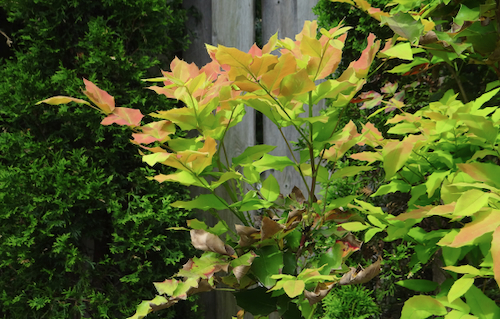
Mahonia x wagneri ‘Pinnacle' - young leaves - Late May.
Fruit: Sour, dark bluish-black berries with thin grey frosting.
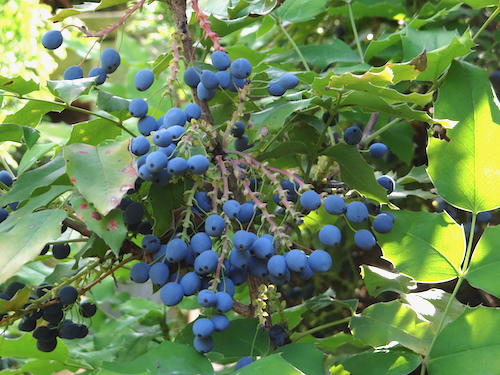
Mahonia x wagneri ‘Pinnacle' - berries - July.
Range: Mahonia aquifolium is native to north and central America.
Habitat: Mixed coniferous woods.
CULTIVATION:
Light: Shade, semi-shade or even full sun with adequate moisture.
Soil: Any good well drained garden soil.
Water: Well drained, moist soil.
USDA Hardiness: Zones 5-8.
Companion planting: In the front of a shrub border or in the back of a rock garden. With spring bulbs.
Propagation: From seed: Expose to fluctuating outdoor winter temperatures with freezing for 3 months. Gradually increase light and temperature in the spring. Pulpy coat inhibits germination. Remove by soaking and rinsing in clean water for approximately 7 days. Discard water and wash off pulpy coat completely in daily detergent washes. Hybrids will not breed true from seed. From cuttings: Semi-ripe in late summer. Division of suckers.
Pruning: Cut back or thin as necessary after flowering.
Pests and diseases: Deer and rabbit resistant. Usually trouble free. Mildew and rusts might occur.
References:
https://onrockgarden.com/index.php/germination-guide
Text and images supplied by Anna Leggatt (Toronto Master Gardener)
